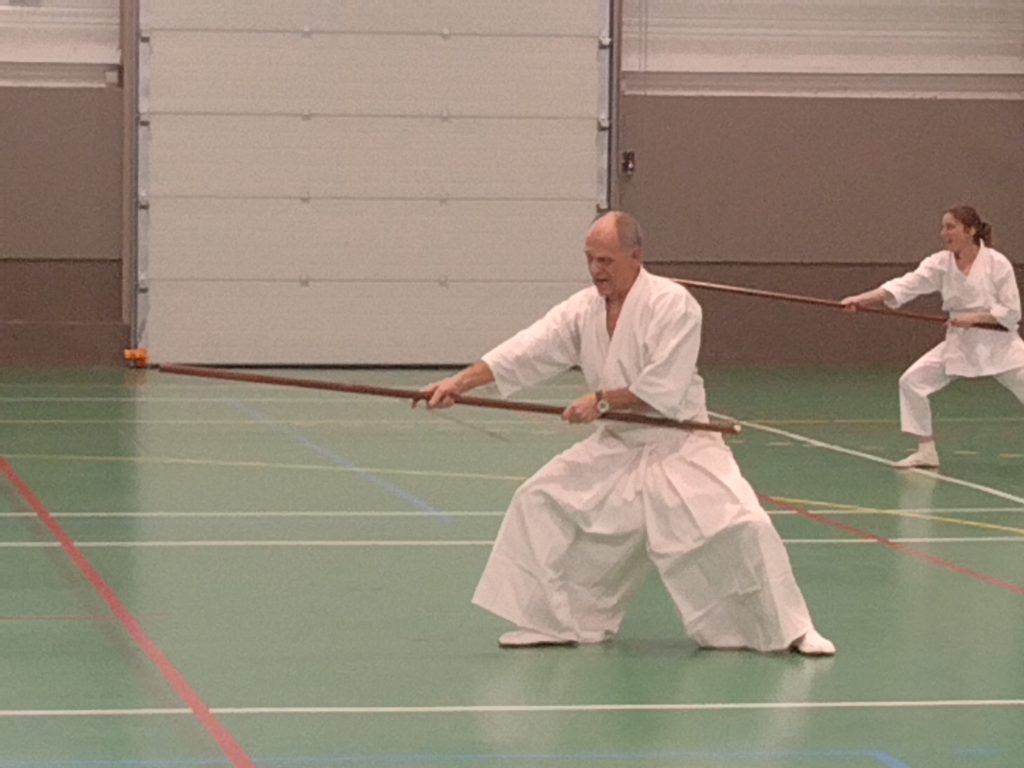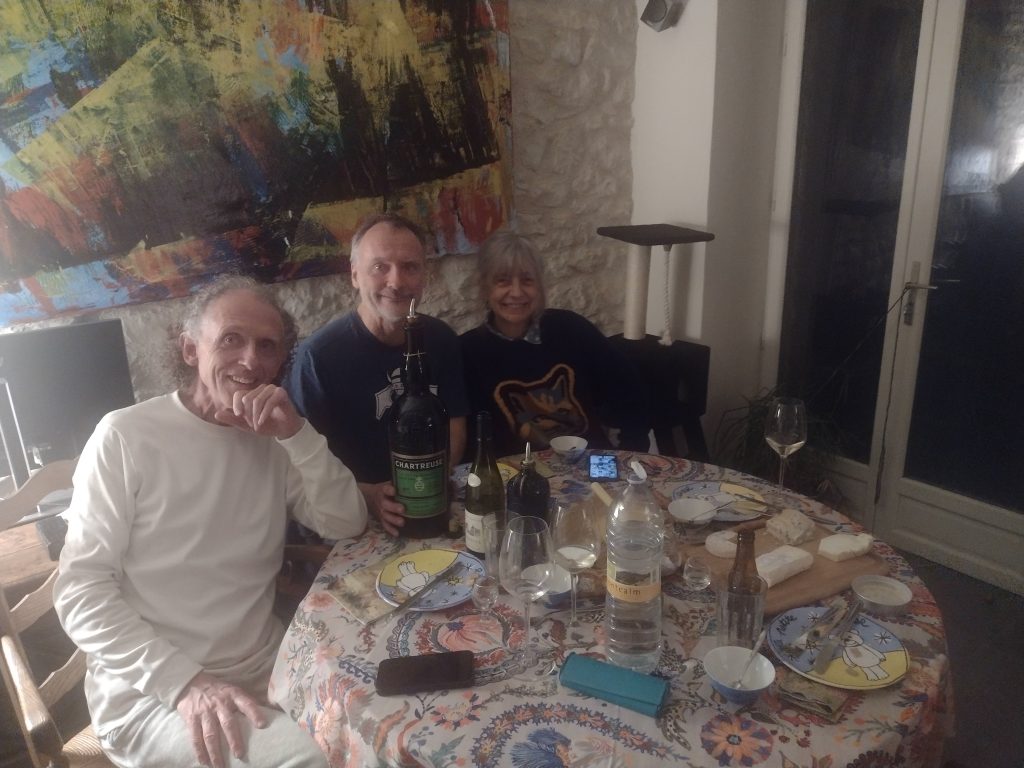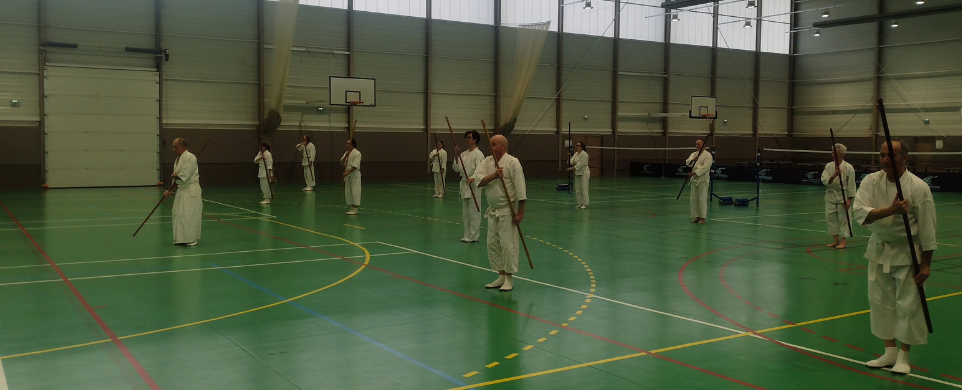By Rob Gaston
Here is a brief report of my trip to Macon France to attend the ETC boh workshop in which Alain Chevet presented Shoshi no kon boh kata that Ito developed over the last 15 years.

This kata had as its starting point as Sueyoshi-no-kon kata, the sho-dan level boh kata that was used in the bohjutsu exam curriculum until the early 2000s. In the new name “Shoshi” means after the laughter and I wondered if there a translation subtlety I missed from Japanese to French to English. Initially it sounded like a suggestion to stop laughing and be serious. Through repeated practice and Alain’s story of Ito sensei laughing as he taught it, I realized it was a peaceful joyous feeling one has after a good belly laugh.
I arrived in Paris and was met by Charles Burns for a short train ride to Tonnerre, in the Burgundy region. We had a wonderful welcome dinner and overnight stay with Georg and Natalie which included some Yon-dan Soei kumibo practice with Charles and Georg. We awoke early and drove to Macon Sport Center and continued practice that evening before dinner.

Saturday morning began the official workshop in which Alain demonstrated Shoshi no kon. We began a to break down the various parts of the kata. The first keiko was quite long and lasted 3 1/2 hours. The beginning movements of the kata worked well as a kumibo and we practiced for a while. It consisted of two jodan gyaku receives stepping back and a quick chudan morote tsuki to stop your opponent’s attack. The long-repeated practice softened our minds and bodies and we were doing a kumite that flowed back and forth with no clear leader or follower, curving and changing the rhythm so the attacker could at any time become receiver.
We progressed to learning the middle portion of the kata and took a break for lunch.
For keiko #2 we added in the left right change of direction portions of the kata. This part was familiar to those who had done the original Shodan boh kata. We explored it more deeply with a wave like kumibo that reminded me of the inyo-itai boh movements absorbing the boh into fluid motion. We progressed through the first 2/3s of it.
After dinner we retreated to the tea corner room and ETC had a boh subcommittee meeting that included drinking and brainstorming of how they wanted to include Shoshi no kon into the ESC Shintaido boh curriculum. For now, it will be in their teaching curriculum and reviewed in 2026 to add to the exam curriculum.
The next morning, in the final class, we finished off the kata and studied a third kumibo. This added a jump away and geidan uchi komi to protect our ankles as we step across and jump away from a tagurei tsuki to our ankle. By this time a sense of peace and relaxed smiles were evident in the practice. Alain finished the class with repetition of the kata as he fine-tuned our movements individually.
The warm welcome I received from the ESC members left me energized and excited for Shintaido bohjutsu. I am left in wonder at every Shintaido event that gets people together from diverse cultures and experiences, allows connection and understanding and my renewal of the value of Shintaido. The sense of being relaxed, happy and enthused has returned home with me.I quickly reached out to PacShin with a request to teach a boh workshop to teach the boh kata of the joyous warrior. It will be May 19th, 2024. I hope to get more opportunities to pass on this kata to those who love bohjutsu like I do.




Bravo Rob. Best wishes for the Boh Workshop.